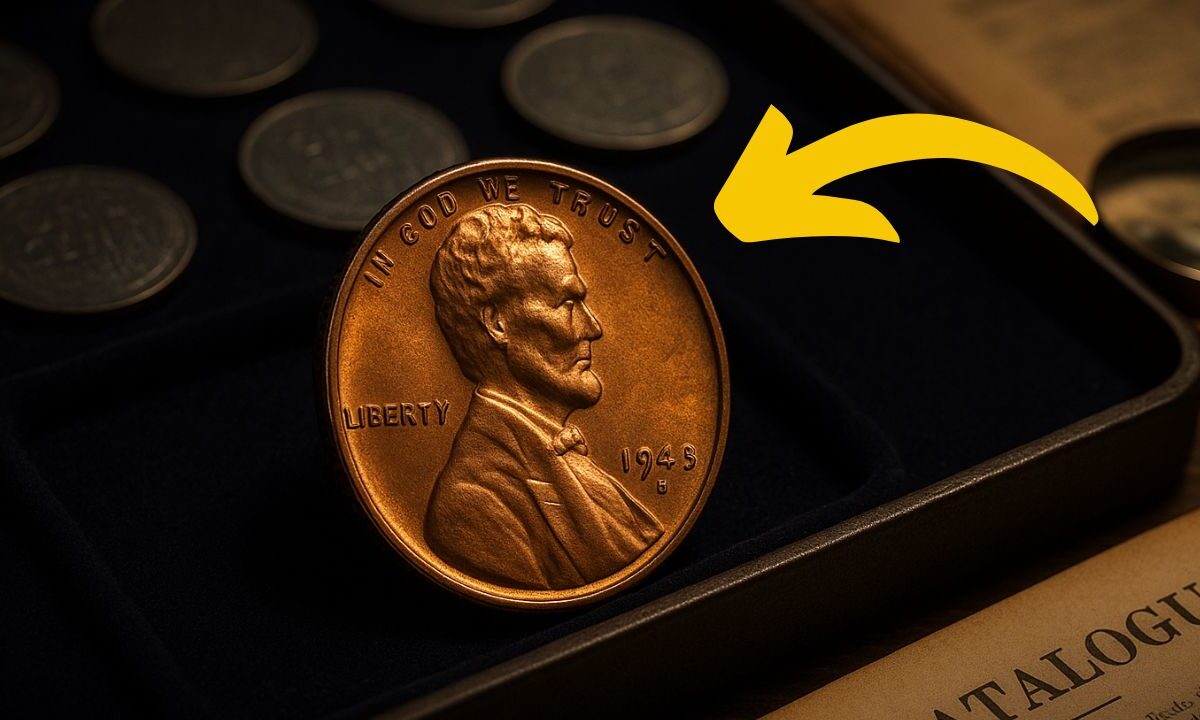The 1943 Bronze Lincoln Penny is among the most celebrated and valuable error coins in numismatic history.
Struck accidentally on bronze planchets during wartime restrictions, these pennies have fuelled intense collector interest.
Over the decades, their scarcity and mind-boggling auction prices have made them legendary.
This article dives into every detail—from composition and identification to auction milestones—providing a rich, SEO-optimized narrative on how a steel-minting error turned into a multi-million-dollar coin.
Historical Context & Origin of the Error
During World War II, copper was urgently needed for military hardware. In response, the U.S. Mint switched the Lincoln cent production to zinc-coated steel in 1943.
However, a few bronze planchets remained in the mint machinery and were mistakenly struck.
These errors could occur at any U.S. Mint facility active at the time, including Philadelphia, Denver, and San Francisco.
As a result, an extremely limited number of bronze 1943 pennies entered circulation—accidentally. The combination of their origin and wartime context is what makes them a true minting anomaly.
Rarity and Estimated Survival Count
Determining how many 1943 bronze pennies survive is difficult, but estimates generally point to around 40 known pieces, though some suggest even fewer—around 27 confirmed survivors in collector hands.
Their scarcity is foundational to their value, and each confirmed piece garners significant attention from numismatists and auction houses.
How to Authenticate a 1943 Bronze Penny
In 1943, during World War II, the U.S. Mint switched from copper to zinc-coated steel for pennies to save copper for war materials.
However, a few pennies were mistakenly struck in bronze (copper alloy) left over from 1942.
Because of this error, the 1943 Bronze Penny is extremely rare—fewer than 40 are known to exist, and they can sell for hundreds of thousands to over $1 million at auction.
Due to its high value, many counterfeits exist. Knowing how to authenticate one is crucial.
Major Specimens and Auction Records
A number of 1943 bronze coins have fetched astronomical sums:
- 1943-D Bronze Cent: The only Denver-mint bronze example is widely acknowledged as unique. It sold for an astounding $1.7 million in a private transaction.
- Don Lutes Jr. Coin: Perhaps the most famous story—Don Lutes Jr. discovered the coin in his cafeteria change in 1947. That specimen went to auction in January 2019, generating excitement and selling for $204,000.
- Other High-Value Sales:
- A San Francisco (1943-S) bronze cent in MS62 Brown grade fetched $1,000,000 from collector Bob Simpson.
- Another 1943-S bronze cent sold for $173,000 in 2008.
- Additional sales: a bronze cent in AU58 grade made several hundred thousand dollars; a different example in AU50 realized $372,000 in 2022.
Notable Details & Sales Timeline
| Year | Specimen Type | Grade / Owner | Sale Price |
|---|---|---|---|
| 1947 | Discovered coin | Don Lutes Jr. | – (found, not sold) |
| Jan 2019 | Same coin auction | Heritage Auction | $204,000 |
| 2008 | 1943-S Bronze | AU55 (Wing Jr. Collection) | $173,000 |
| 2010 | 1943-D Bronze | Unique specimen | $1.7 million |
| c. 2012 | 1943-S Bronze | Bob Simpson MS62 Brown | $1,000,000 |
| 2022 | 1943 Bronze | AU50 (Simpson Collection Part IV) | $372,000 |
Each transaction adds to the storied legacy of these pennies, cementing their place in numismatic lore.
Why These Pennies Matter to Collectors
Several elements combine to make the 1943 bronze Lincolns exceptional:
- Their creation was purely accidental—never intentional errors.
- They represent a rare surviving link to wartime minting processes.
- Vivid, dramatic auction values illustrate both scarcity and collector demand.
- The stories behind each coin—like Don Lutes Jr.’s cafeteria discovery—add emotional and historic resonance.
SEO-Driven Keyword Highlights
Throughout this article, strategic keywords have been emphasized for SEO impact:
- 1943 Bronze Lincoln Penny
- Steel Minting Error
- 1943-D Bronze Cent
- Don Lutes Jr. cafeteria penny
- Authentication tests
- Million-dollar coin
- Auction records
These keywords reflect the most commonly searched terms related to this topic and help ensure strong search performance and content relevance.
The 1943 Bronze Lincoln Penny is so much more than a coin—it’s a tangible, rare artifact born from wartime necessity and minted by mistake.
With fewer than fifty known examples, each specimen evokes curiosity, reverence, and, often, auction-room drama.
From Don Lutes Jr.’s humble school-lunch discovery to the soaring sale of a unique Denver-mint example at $1.7 million, these coins remind us how history, scarcity, and a dash of luck can turn metal into legend.
Whether you’re a serious coin collector or simply fascinated by the quirks of history, the 1943 bronze Lincoln penny remains one of the most compelling tales in modern numismatics.
Frequently Asked Questions
How many 1943 bronze Lincoln pennies are known to exist?
Estimates vary, but experts generally agree that around 27 to 40 authentic examples survive today. Regardless of the exact count, they are exceedingly rare.
What is the most a 1943 bronze penny has sold for?
The most valuable example, the Denver-mint (1943-D) bronze penny, sold privately for approximately $1.7 million—making it the undisputed king of bronze penny values.
How can I quickly test if a 1943 penny is bronze or a steel forgery?
Start with the magnet test—a genuine bronze penny will not attract a magnet. Next, weigh it: an authentic bronze 1943 penny should weigh about 3.11 grams. If it’s lighter or magnetic, it’s almost certainly a steel copy or altered piece.

